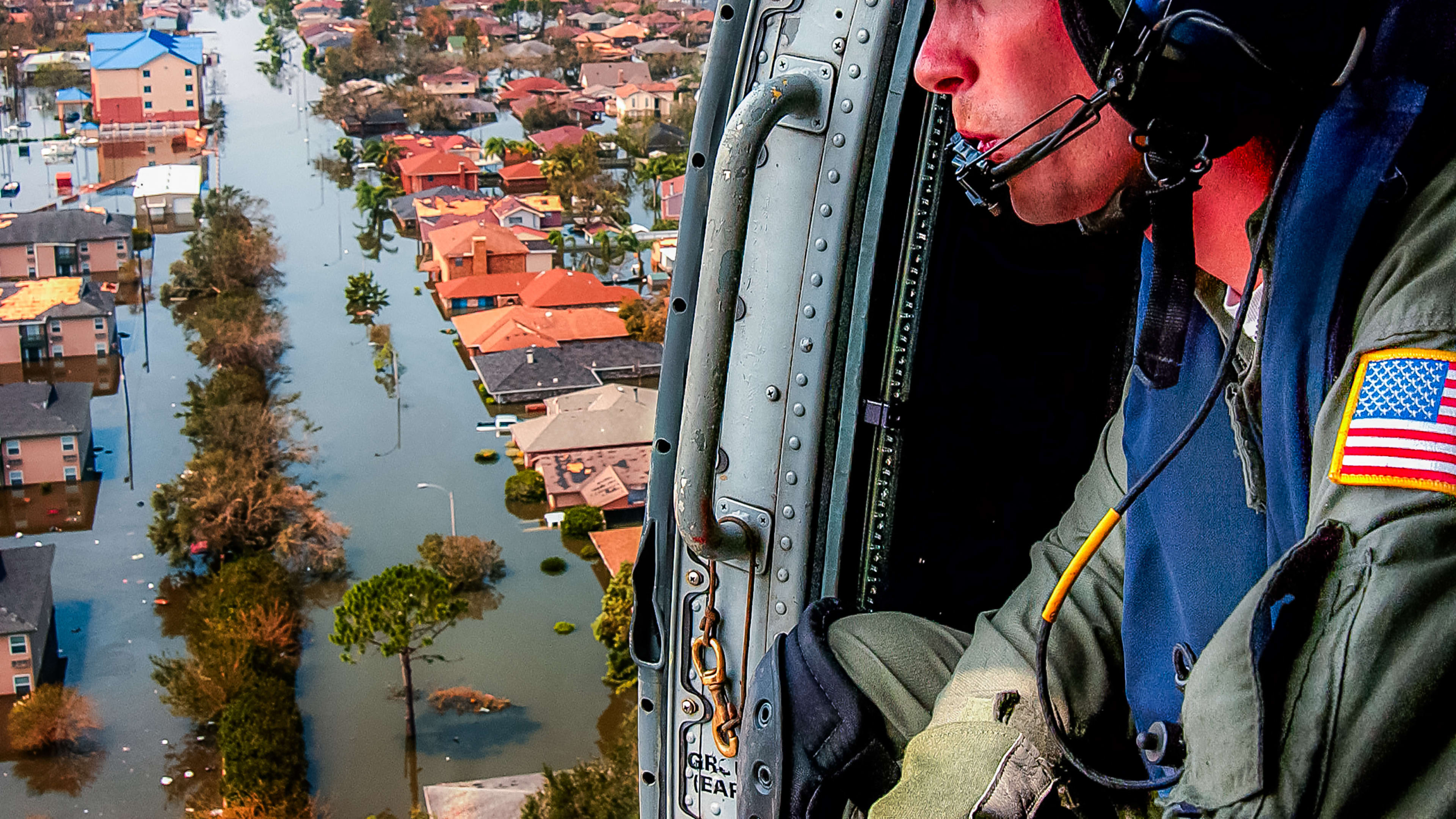These days, we face extreme weather crises during more than just hurricane season. It’s become regular news for our country—and our world—to face “severe” or “extreme” weather on a regular basis. Extreme weather is now one of our planet’s top global risks, according to World Economic Forum.
Triple-digit temperatures in Arizona for longer than normal resulted in record-breaking heat waves. Canada’s raging fires caused smoke and poor air quality not only in Canada, but for most of the central U.S. and East Coast. Storms regularly ravage the Midwest and East, often accompanied by hail, torrential rain, high winds, and flooding, causing power outages, damaging homes and communities, and even taking lives. Tornadoes and hurricanes leave chaos in their wake. Extreme rain and drought destroy harvests. Severe heat decreases water levels plus increases wildfire risk.
What was extreme weather years ago is now normal. Our extremes are becoming more extreme and will continue as climate change accelerates the threat.
Unequal impact
My friend Marshall Shepherd, PhD, is a global expert on weather and climate. He makes it clear climate change and extreme weather impact the “kitchen table lives of Americans” and should be a top priority for everyone.
However, it’s also clear from his research that extreme weather takes a heavier toll on children and older adults, and certain communities including those that are under-resourced, rural, and communities of color. When we look at prevention and preparedness, we must consider those most at risk from extreme weather and environmental impacts if we want to address these challenges.
Communities that are historically under-resourced are more likely to live in risk-prone areas and less able to react to and recover from extreme weather events. Not everyone can move during extreme weather events to escape harm’s way. Some families don’t have the resources or insurance to weather the storm. Even some jobs are more impacted by climate-related events, which can cause extreme heat and air pollution. Certain communities are also more likely to experience harmful health effects from extreme weather, according to the EPA’s Social Vulnerability Report.
People of color also are more likely to live near and be impacted by environmental hazards and crises related to climate, reports the Princeton Student Climate Initiative. And the increase in natural disasters, extreme heat, and other challenges continue to disproportionately impact people who are lower income, because of where they live, lack of community infrastructure and insurance, health disparities, and other longstanding, systemic issues.
Extreme weather events clearly have a detrimental effect on overall health and well-being. This means an increase in physical injuries, mental health challenges, mold, pollutants and poor air quality, toxic water, heat-related health conditions, and infrastructure disruption impacting healthcare and quality of life, according to the National Institute of Environmental Health Sciences. In fact, extreme weather and climate change not only can cause immediate anxiety but now have also been shown to contribute to generational trauma and “lifelong” impacts on mental health.
This unequal impact is so well documented that the White House recently established Justice40, a cross-sector federal initiative focused on pollution and climate change, with a goal to ensure that 40% of certain federal investments go to under-resourced communities. This initiative seeks to address the social and environmental determinants of health, improving infrastructure and providing other support to communities disproportionately affected. It also provides a Climate and Economic Justice Screening Tool.
What can we do?
We can educate ourselves on the issues. Recently, Marshall Shepherd came to speak to our national board of directors and executive staff about extreme weather, especially the unequal impacts and health consequences. We plan to have him speak to our Corporate Leadership Council as well—a group of more than 50 social impact leaders representing top global companies.
We can partner by joining multi-sector groups—leaders from government, military, corporate, faith-based, and higher education—who are working together at the local, national, and global levels to address these challenges. This could include grant-funded community sustainability projects, corporate volunteerism, school curriculum, innovation challenges, and more.
We can get involved. This includes with groups like Ironbound Community Corporation that is working toward safe, healthy, equitable communities for all people. It includes advocacy for policy change, sustainable energy, and clean-up of toxic sites. Extreme weather only exacerbates the damage in communities that are already facing environmental toxins or lack of infrastructure. Similarly, the NAACP, which champions environmental justice and human rights globally, is raising awareness regarding the impact climate change has on under-resourced populations, whether Black and brown communities in Louisiana or the Bahamas, or Inuit communities in Alaska.
At CHC: Creating Healthier Communities, we’ve been working to address the barriers to health for nearly 70 years. It’s about ensuring every person in every community has an opportunity to live their healthiest life. We work with thousands of nonprofits, companies, and other organizations, raising resources, building coalitions, elevating communities, and partnering to strengthen local infrastructure and capacity. Because stronger, healthier people and communities can better weather these storms.
It’s clear extreme weather and climate change continue to impact all of us, and this impact will only accelerate. It’s also clear certain groups are disproportionately impacted. If we truly want to live in a just, healthy, and sustainable world, we must work toward solutions for all people. Together, we can address climate change, advance health equity, and build resilient, sustainable communities that are better able to withstand whatever the future holds.
Everyone can do their part. We invite you to join us.
Jean Accius, PhD, is president and CEO of Creating Healthier Communities.
Recognize your brand’s excellence by applying to this year’s Brands That Matter Awards before the final deadline, June 7.
Sign up for Brands That Matter notifications here.
